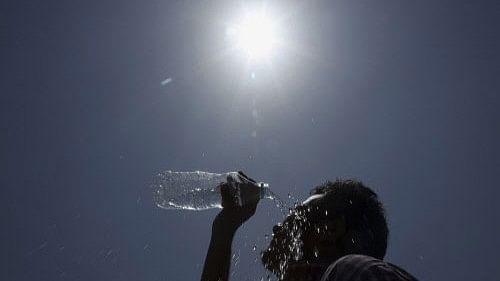
According to a World Bank study, almost 75 per cent of India’s workforce depends on heat-exposed labour.
Credit: Reuters File Photo
A deadly heat wave is sweeping central and northern India, with extraordinarily high temperatures taking a heavy toll. Delhi saw 38 consecutive days of maximum temperatures above 40 degrees C, causing deaths, health problems, water shortage, and disruption of life. North-West and North-East India have also recorded twice the usual number of heat wave days in the last few weeks. Even the cold higher altitude regions have seen historically high temperatures.
The Indian Meteorological Department (IMD) had issued a red alert for the region. It has also warned of heat illness and heat strokes affecting people of all ages. Hot weather conditions exist in many other parts of India as the monsoon has been deficient or delayed.
Many deaths have taken place and it is difficult to get an exact count. Some of these are not attributed to heat but to heart attacks or other conditions triggered by the heat. In Delhi, 120 deaths have been reported but the actual count could be much more.
Hospitals find it difficult to provide care for the large number of people who seek treatment. Typically, people from the lower strata of society, especially labourers and migrant workers, are the most affected. Most vendors have reported a loss of earnings. Work timings have been rescheduled, but people still find it difficult to work.
According to a World Bank study, almost 75 per cent of India’s workforce depends on heat-exposed labour. It is estimated that India might account for almost 43 per cent of global job losses from heat stress-associated productivity declines by 2030.
The human situation in which death, illnesses, and livelihood problems affect individuals and families is not captured by these percentages. In many places, it is the new Covid-19.
Lingering El Nino has been cited as a reason, but high heat conditions have existed in the last three years, and are predicted to continue in the coming years. While local and passing issues might aggravate the heat wave crisis, the most important reason is climate change, which is getting worse.
Heat waves, just like floods and other extreme weather events at other times of the year, need to be tackled both in the short term and the long term. Heat action plans exist in most states, but are often not implemented.
Most of the preventive and ameliorative measures, such as the planting of trees, are known but not implemented. Also, steps taken in India need to align with those outside the country because extreme heat is a worldwide phenomenon now.